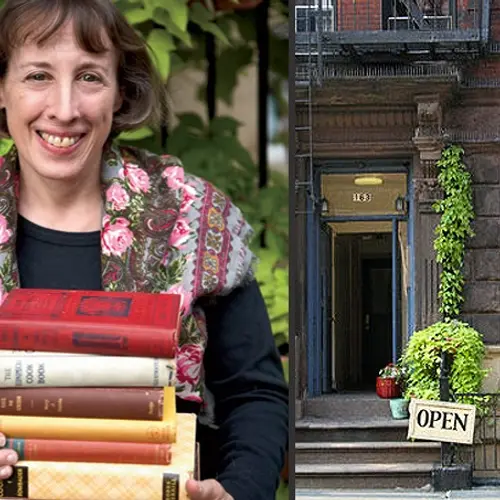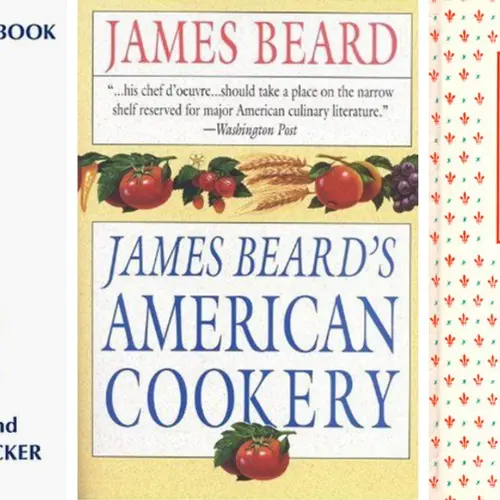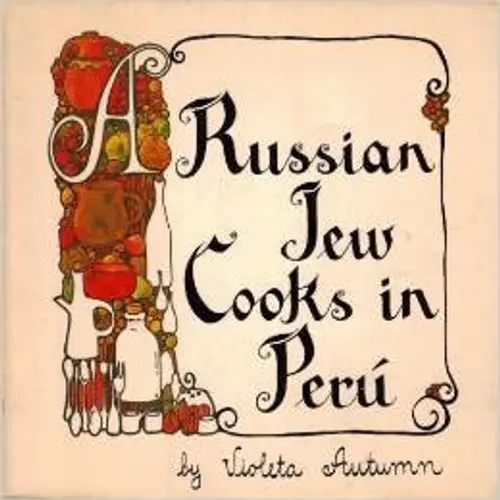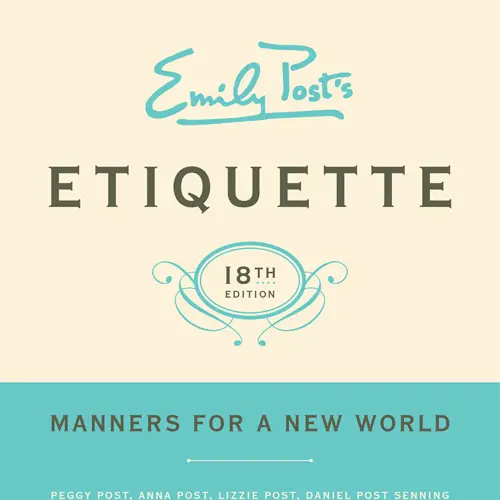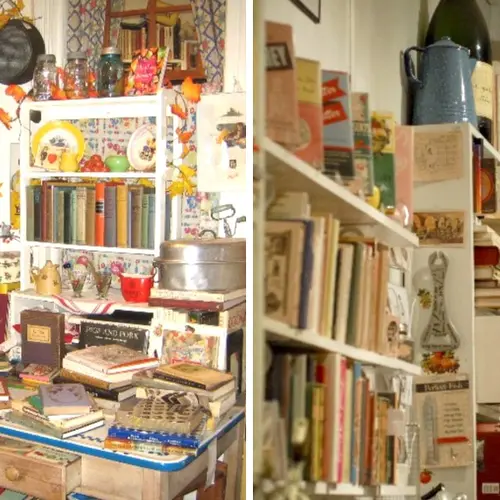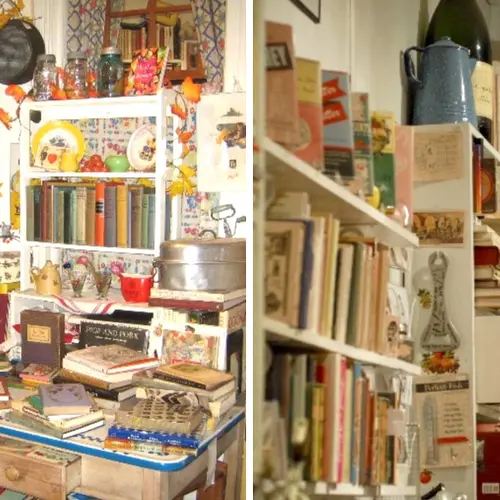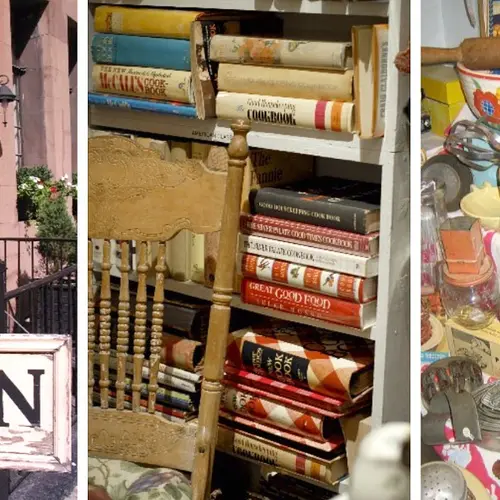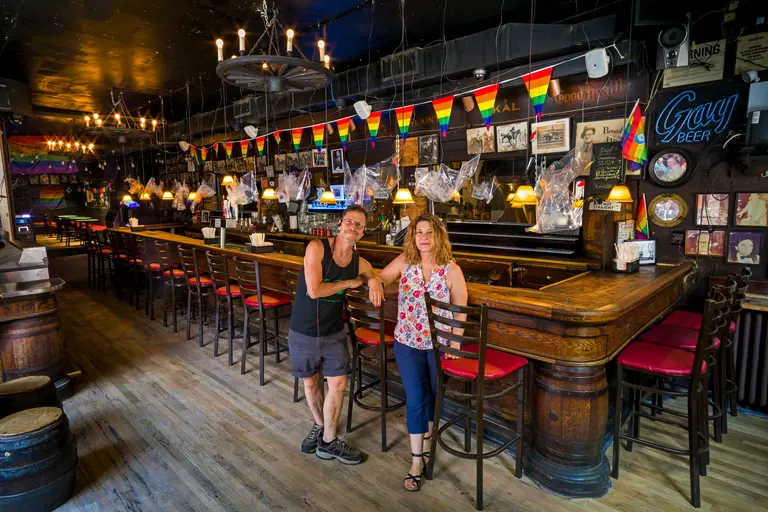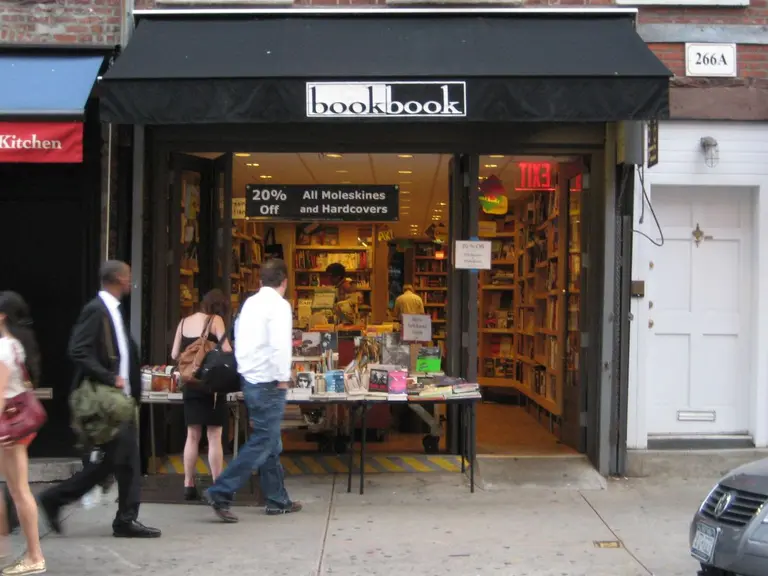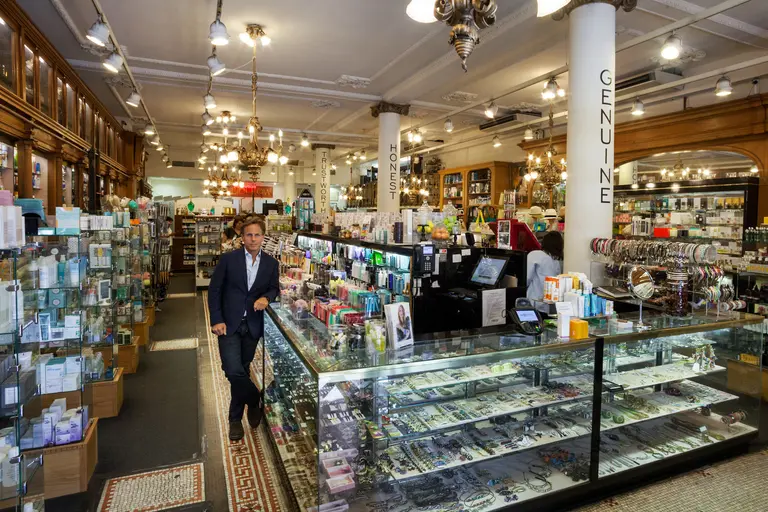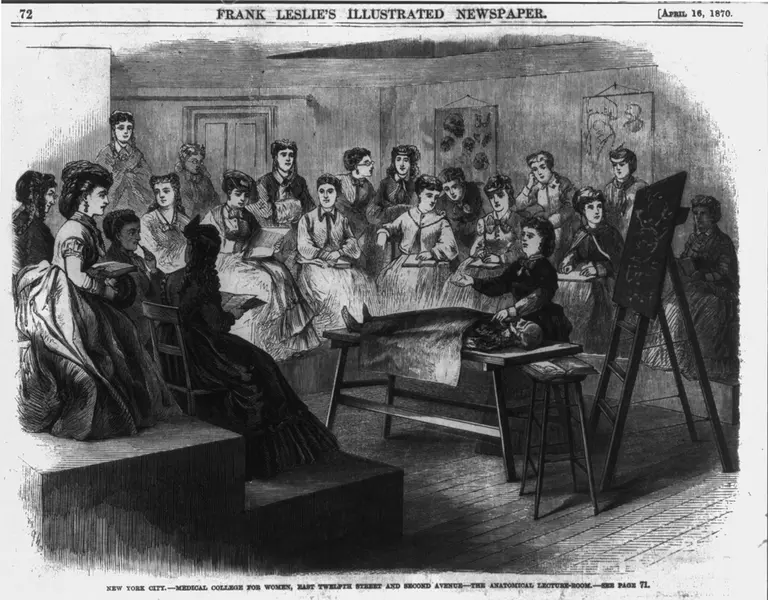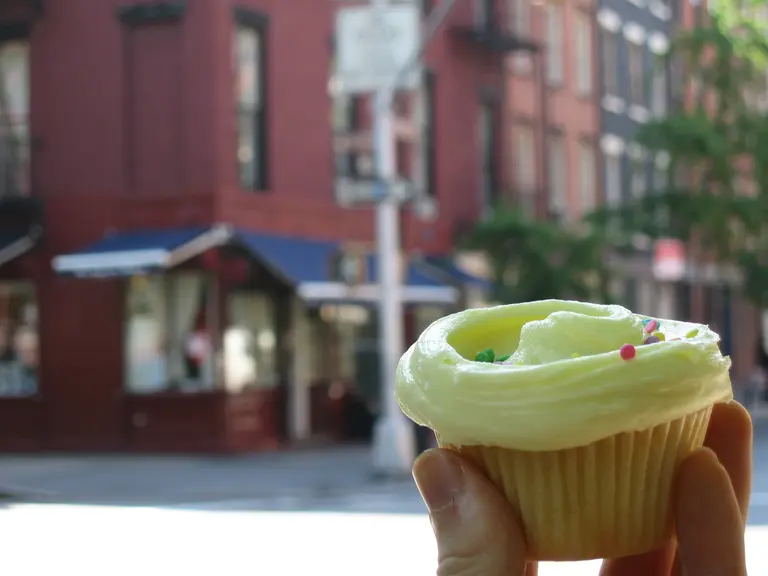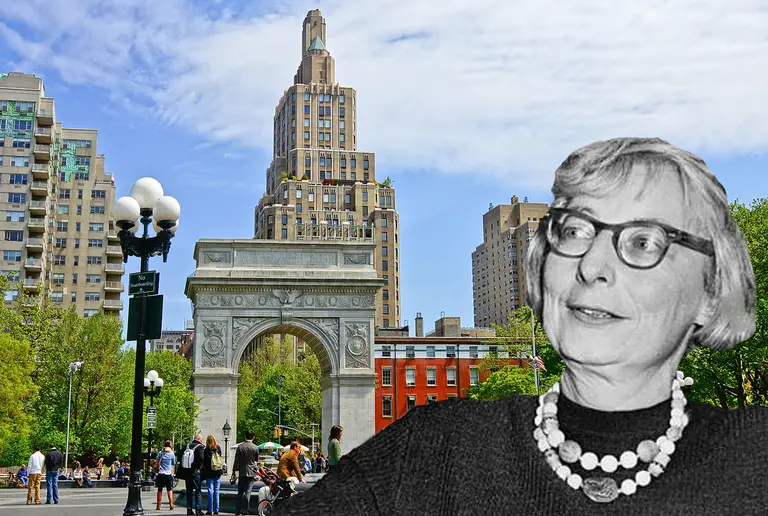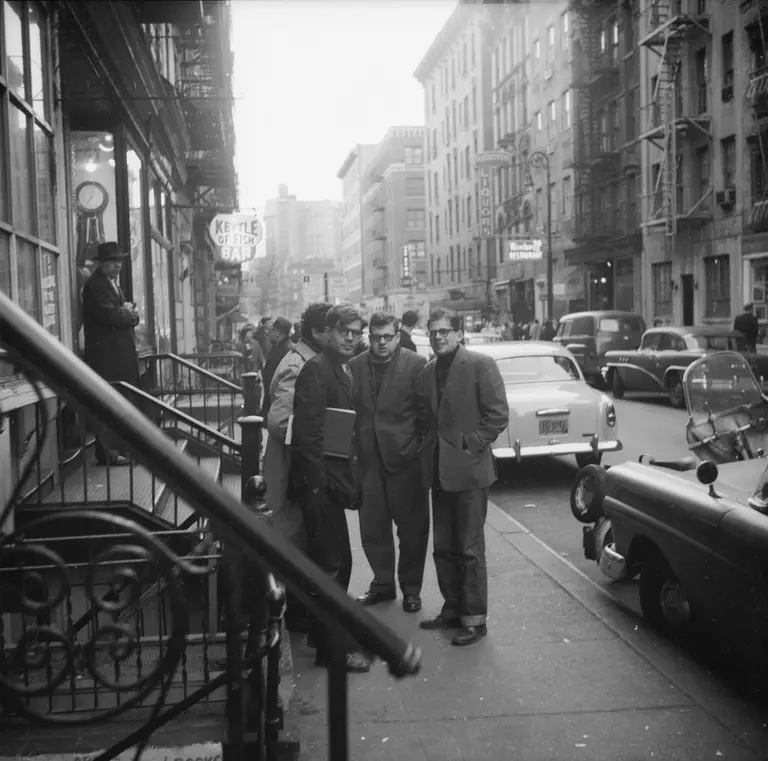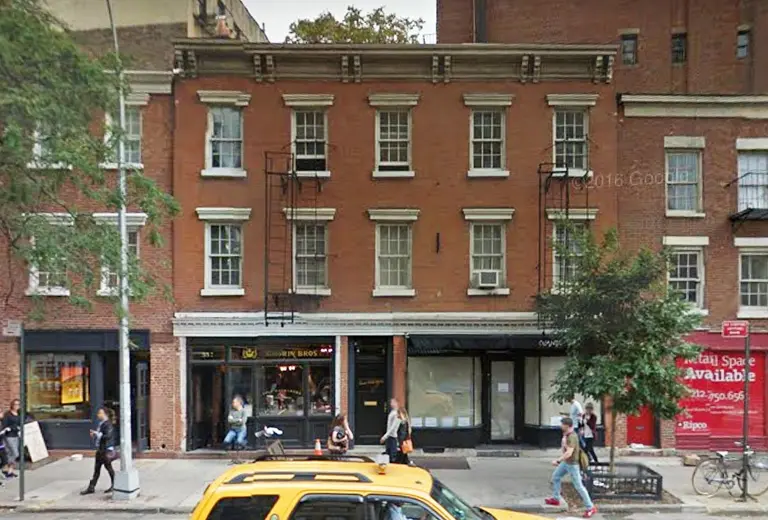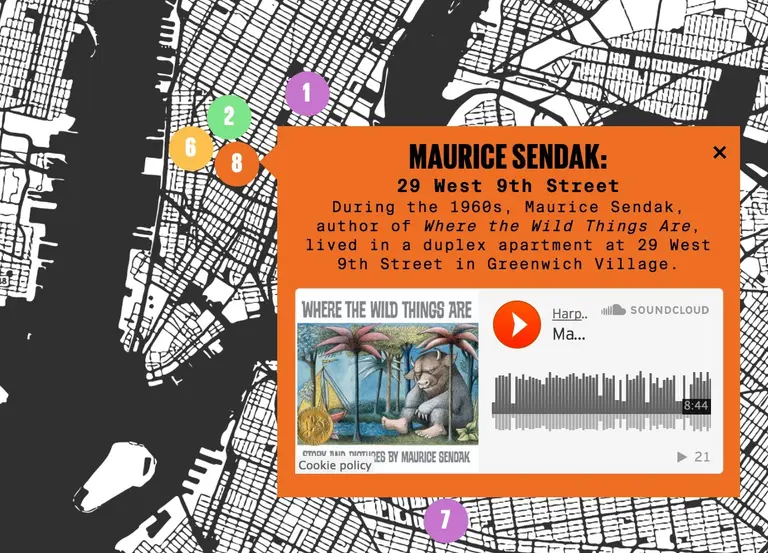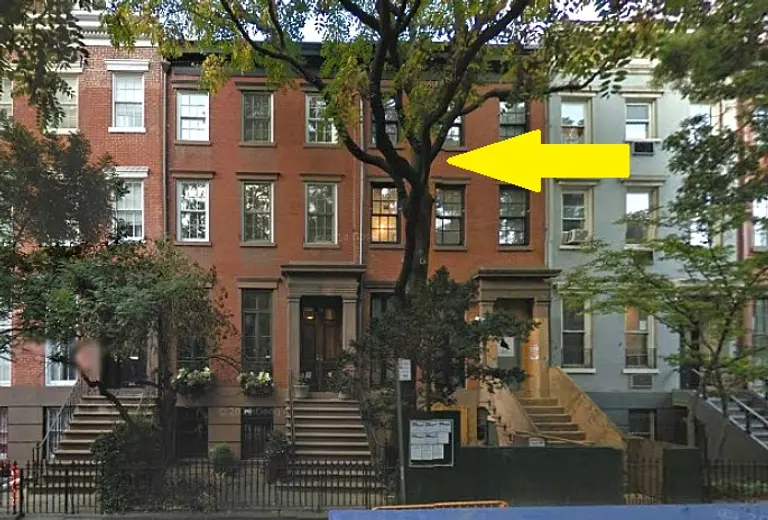New Yorker Spotlight: Bonnie Slotnick Takes Us Through Her Greenwich Village Cookbook Store
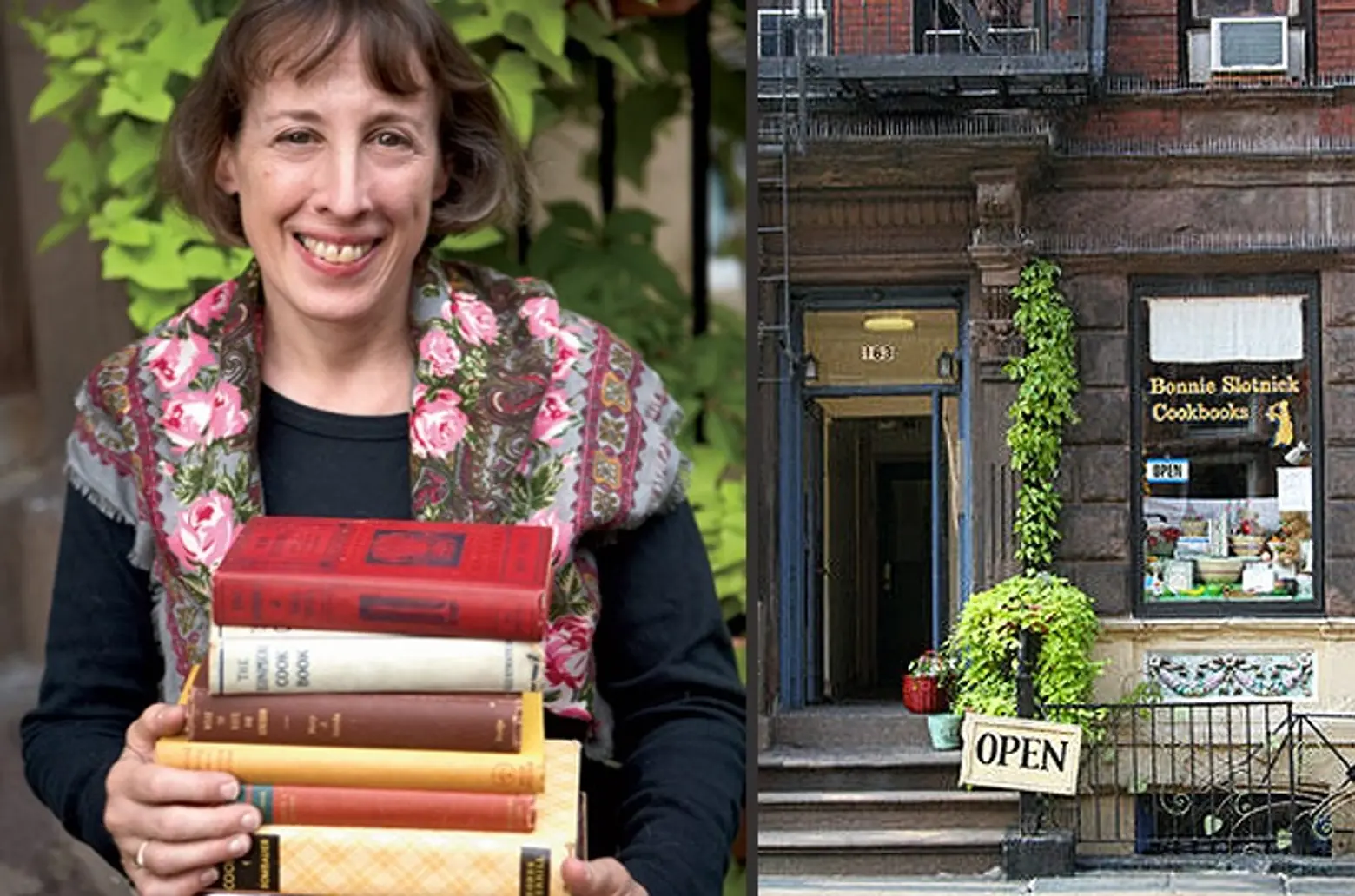
Amongst the endlessly expanding restaurant options in Greenwich Village, there is another culinary experience cooking on West Tenth Street. Bonnie Slotnick Cookbooks is devoted to out-of-print cookbooks of all shapes, sizes, and cuisines. And while Bonnie isn’t offering the latest cronut-esque obsession, she provides New Yorkers, and customers all over the world via the internet, something much more special–a chance to leaf through bygone cooking eras and own a piece of culinary history.
Bonnie Slotnick Cookbooks has been a go-to location for out-of-print books since opening in 1997 in a Village basement, when perusing the stock was by appointment only. In the current location, shelves are brimming with books from all over the world that date as far back as the 18th century. Bonnie was even called upon to provide cookbooks for the film Julie & Julia starring Meryl Streep as Julia Child.
6sqft recently stopped by to speak with Bonnie about the world of out-of-print cookbooks and what it means to live and work in Greenwich Village.
What inspired you to open a store devoted to cookbooks?
Bonnie: I came to New York in 1972 to attend Parsons and moved to the Village, which was full of bookstores at the time. After I graduated, I worked in the Parsons library, and there was a bookstore in the building that had a lot of cookbooks. I felt like I was drawn to them. I’ve always been a word person, and decided to go into publishing. I started out on the bottom at a little book packaging company. I was there for 16 years and became a writer and an editor.
At about the same time, I became a book scout for a cookbook store uptown. I started with a handwritten list of books customers were looking for and searched all over the city. I spent my vacations going up to New England, Pennsylvania, and even England. I did that for 12 years while working in publishing. Finally, I realized I could take my inventory of 2,000 books and start my own store. I sent out handwritten cards as my press release. Florence Fabricant of the New York Times got one. She interviewed me, and I was in the Times’ food section.
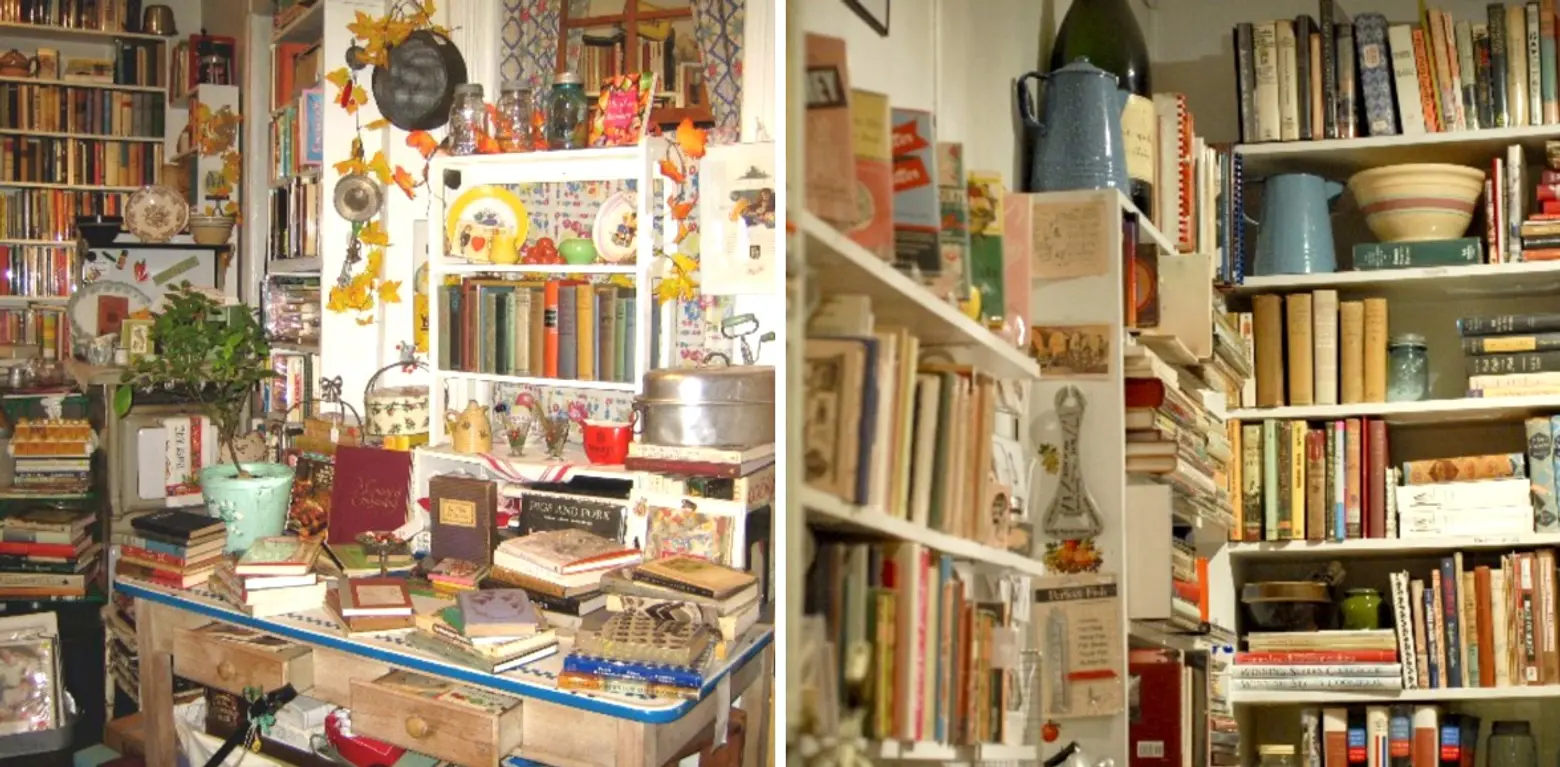 Displays in Bonnie Slotnick Cookbooks courtesy of Jae-eun Chung
Displays in Bonnie Slotnick Cookbooks courtesy of Jae-eun Chung
Why did you open the store in Greenwich Village?
Bonnie: I just love it here. My store has a very villagey set up–it’s not actually on the street and doesn’t have a storefront. That keeps it from being tremendously attractive to an expensive store. People peer in and ask, “How do you get in here?” I’m lucky enough to have a big window. I’m also very lucky that I moved into an apartment in 1976, the year after I graduated, and I still live there.
Why do you think your store is a fit for the neighborhood?
Bonnie: There used to be a lot of used bookstores, antique shops, art supply stores, and small affordable restaurants here. So much of that is gone. In the Strand, they have a display that shows all of the old bookstores on what used to be Booksellers Row, Fourth Avenue between Astor Place and 14th Street.
What does it mean to you to be one of the surviving independent bookstores in the Village?
Bonnie: I’m really lucky to be on a block with another bookstore. I call this book row. If I don’t have it, maybe they have it across the street. I’ve seen so many other bookstores go. I feel a responsibility to dig in my heels and stay here.
How do you find the cookbooks in the store?
Bonnie: In the old days, I used to go to other bookstores. Most of those are gone, so now I get publicity, and people call and email me from all over the country to ask if I want to buy books. I usually ask them to photograph the books just as they are on the shelf so I can read the titles. I then pick out the ones I want. I just did that with someone in Florida who is shipping me four boxes of books. I also have people in the neighborhood, and I go on house calls. That’s great because sometimes it’s an estate, and you find items in the kitchen drawers that are also for sale. I like to have some kitchen and tabletop things in the store.
On average, how many cookbooks do you carry?
Bonnie: I don’t know how many cookbooks are in the store. When I opened my business, I had about 2,000, which is not counting these little booklets that I got from my friend. I think I have about 4,000 right now.
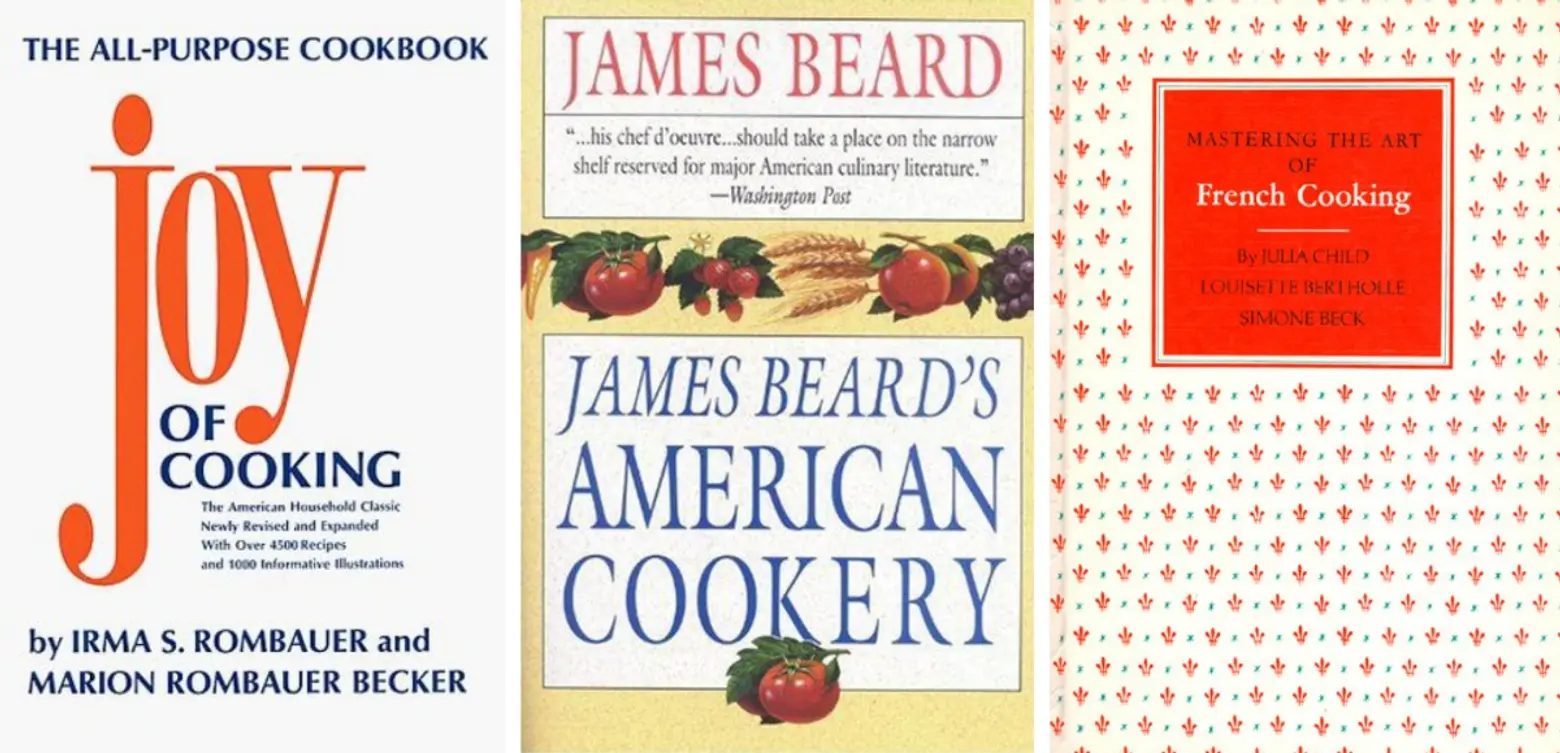 L to R: Joy of Cooking; James Beard’s American Cookery; Mastering the Art of French Cooking by Julie Child
L to R: Joy of Cooking; James Beard’s American Cookery; Mastering the Art of French Cooking by Julie Child
Are the cookbooks in any particular order?
Bonnie: Yes, but there is always one book that doesn’t fit into any category, like books about foods that are made by religious orders. I have books for every course of the meal. I have books for every occasion: entertaining books, cooking on a boat, cooking for 100 people, and all kinds of desserts. I try to have books from every country and every state in the Union. I have paperbacks and books that cost anywhere from 25 cents to $200. I try to have a good supply from major authors. I have a wall that I call “major forces” with Julia Child, Elizabeth David, M.F.K. Fisher, and Jane Grigson. The “Joy of Cooking” has half a shelf. James Beard has a shelf and a half.
When customers wander in off the street, what are their responses?
Bonnie: Sometimes people just cry, “Oh, my grandmother had this, and I haven’t seen it in years.” I have a few of Maida Heatter’s books in the baking section. She’s one of the great American baking authors–and people go off into these rhapsodies about how wonderful her recipes are. I write down what they say, and every year or so I send her fan mail. Very often, people say, “I have a really stupid question.” “Of course I have a book that only has things that are flambéed,” I respond. “Of course I have a book from Martha’s Vineyard or San Antonio, Texas.”
Who are some of your customers?
Bonnie: I have a lot of designers, historians, novelists, and illustrators as customers. People are so taken by old book designs. I have interior designers who come in because they’re working on someone’s home and want the kitchen to look like a real kitchen, so they pick books that have a certain cachet. I have a number of book designers who look at books from about 50 years ago. There is a big interest in the Mad Men era and the wonderful little drawings in the cookbooks from that time. They’re interested in color combinations, ideas for covers, and fonts. And, of course, all kinds of cooks come in, from home cooks to restaurant chefs.
What’s the most interesting customer cookbook inquiry you have received?
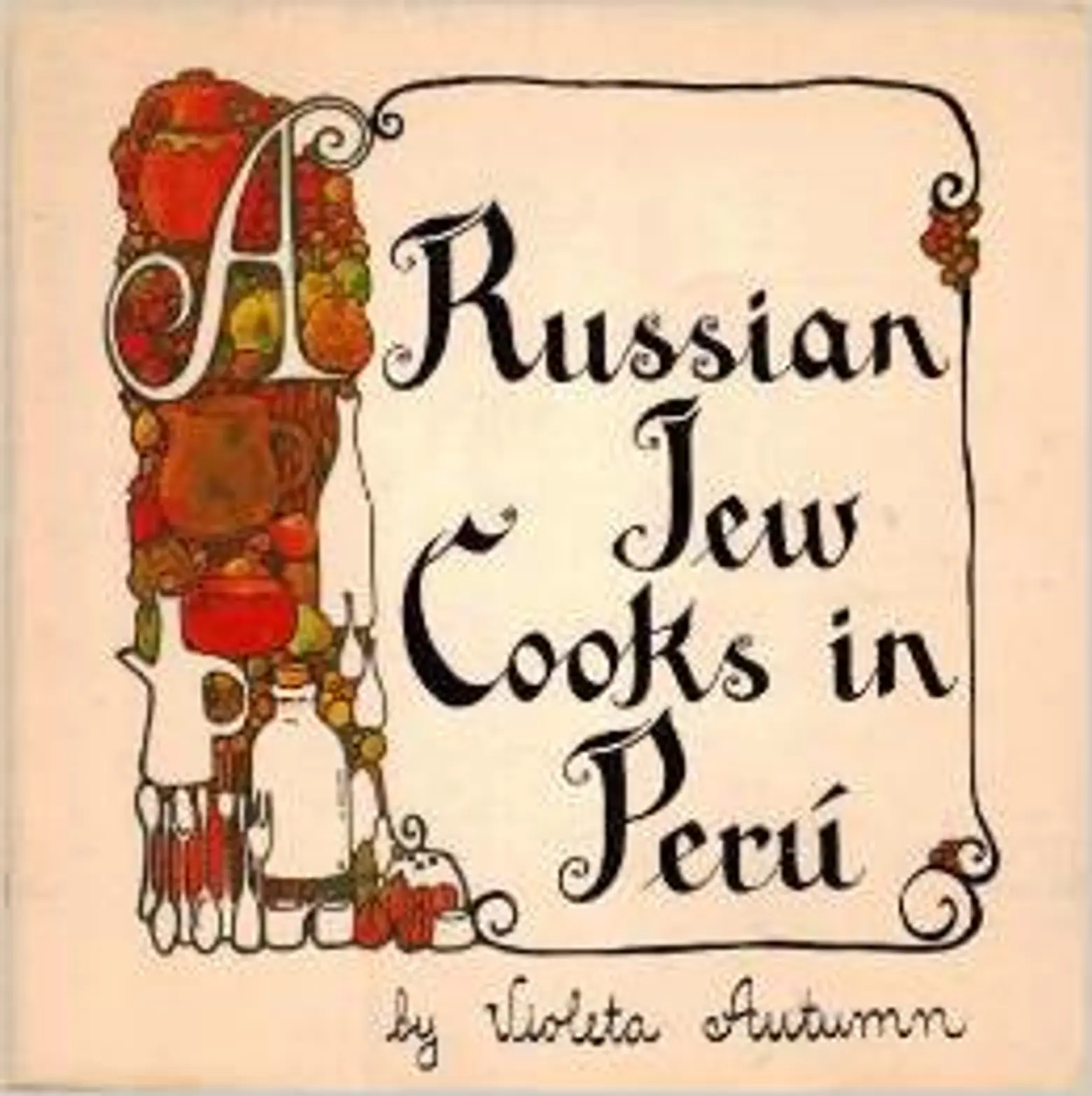 Bonnie: I have gotten requests for books I didn’t believe existed. The first one was for a book called, “A Russian Jew Cooks in Peru.” Remember, there was no internet. I went to a cookbook store in Alexandria, Virginia, and I screamed because there was a copy of “A Russian Jew Cooks in Peru.” I’ve bought and sold many copy since then.
Bonnie: I have gotten requests for books I didn’t believe existed. The first one was for a book called, “A Russian Jew Cooks in Peru.” Remember, there was no internet. I went to a cookbook store in Alexandria, Virginia, and I screamed because there was a copy of “A Russian Jew Cooks in Peru.” I’ve bought and sold many copy since then.
The other challenge that I love is when someone calls who doesn’t know the name of the book they are looking for. Sometimes it’s really easy and they say, “It’s a guy on the cover with black hair.” Sometimes it’s, “This book was in my grandparent’s house. The cover had come off years before.” If I’m lucky enough and the person is local, the look on their face when they get it is great. More often, I mail it off somewhere. Sometimes I ask people to take a picture of the recipient.
Do you remember reading cookbooks when you were a kid?
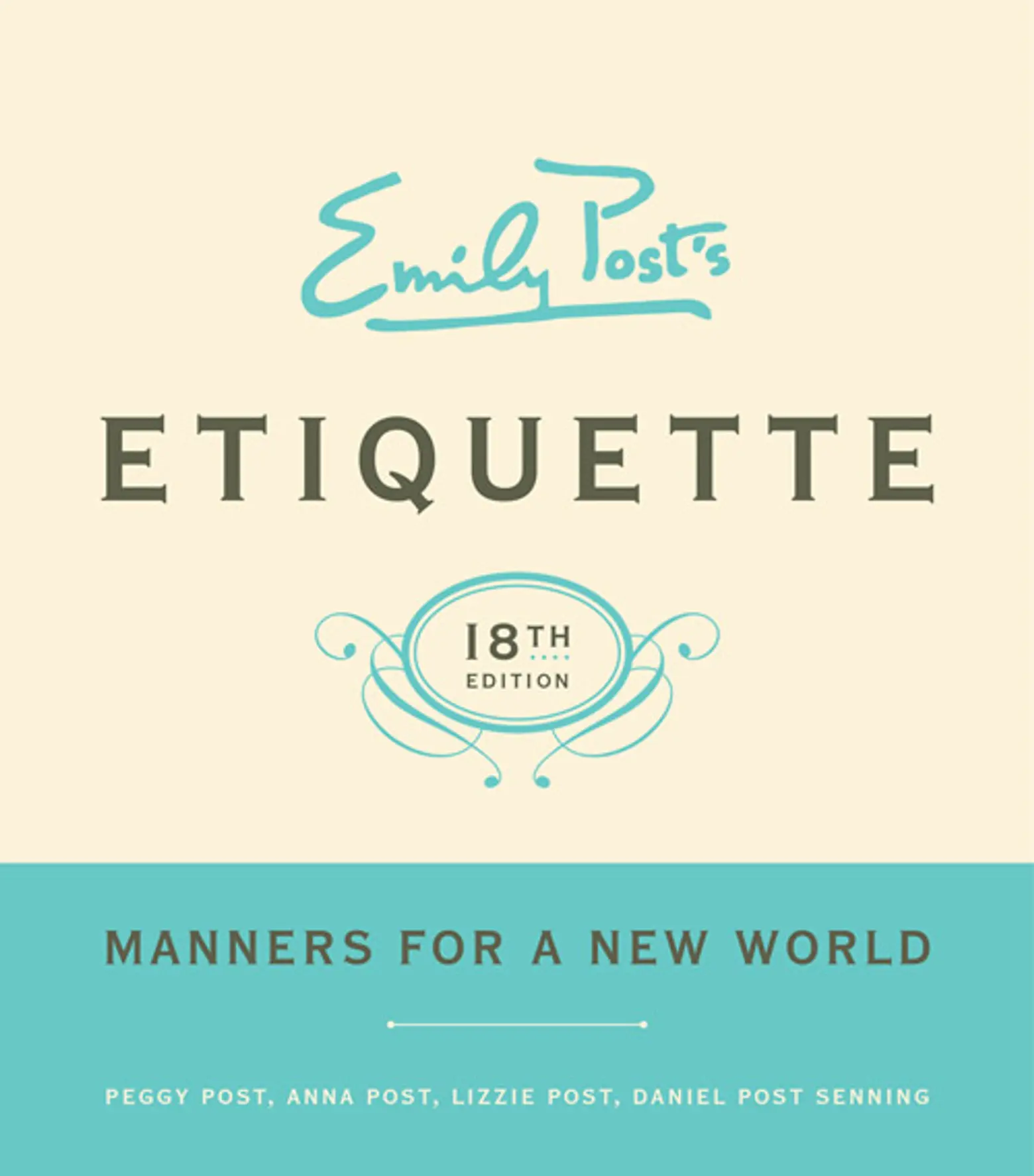 Bonnie: I’m going to show you the big three. This little booklet of household tips for housewives from World War II is the one I credit with getting me hooked on reading about food. It came from Butternut Bread, and I found it in my house in 1960 when I was seven or eight years old. It’s full of household tips like how to get the stain out of your tablecloth or how not to let fat go to waste. I loved the illustrations, which are little fruits and vegetables and household effects anthropomorphized.
Bonnie: I’m going to show you the big three. This little booklet of household tips for housewives from World War II is the one I credit with getting me hooked on reading about food. It came from Butternut Bread, and I found it in my house in 1960 when I was seven or eight years old. It’s full of household tips like how to get the stain out of your tablecloth or how not to let fat go to waste. I loved the illustrations, which are little fruits and vegetables and household effects anthropomorphized.
My mother had two cookbooks. The one that she used occasionally was the “Settlement Cookbook,” and I have a copy that is about the same vintage from the 40’s. It was published in Milwaukee by a group of German Jewish women who ran a settlement house for new immigrants. The illustrations are very much like children’s book illustrations. The whole layout is compelling and charming. The third book is Emily Post’s “Etiquette.” That had descriptions of elaborate dinner parties and country house weekends. Now I live on the block of West Tenth Street where Emily Post grew up.
How many cookbooks are in your personal collection?
Bonnie: People come in and say, “Are you reluctant to sell a book?” I say no because these aren’t books that I choose for my collection. My collection is in my home, and it’s not anything like this. There is hardly a book in my collection that has a dust jacket. I like books from before 1930, and I have a lot of 19th century books. They are not in beautiful condition and are not priceless leather-bound volumes.
Do you cook often?
Bonnie: I love to bake for my friends as often as possible. I hardly ever cook from books. I’ve never had food delivered to my apartment in 38 years. I make something for myself.
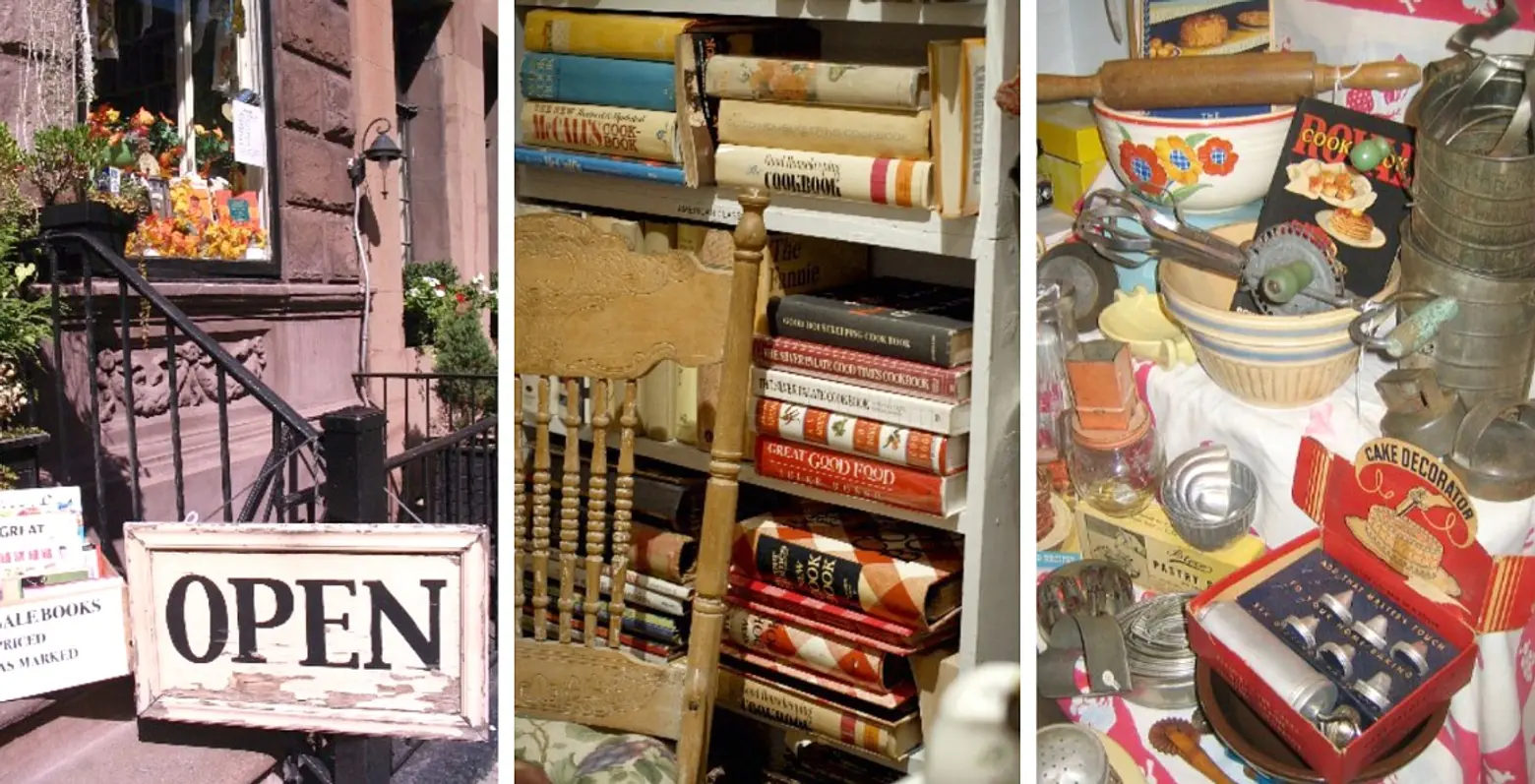 Photos courtesy of Jae-eun Chung
Photos courtesy of Jae-eun Chung
If you could select an older cookbook that epitomizes New York, which one would it be?
Bonnie: I have a book at home from right about 1900. It’s called “In City Tents.” There is another one called “Ten Dollars Enough.” These are both really scarce books from the late 19th/early 20th centuries. “In City Tents” is specifically about living in the city. I always picture books from that period as taking place in my apartment building, which is from 1892. I think about my three flights of stairs, carrying a pail of milk up, and wearing a long wool dress. I would love to see books like this reprinted. Publishing companies sometimes come to me and ask about books to be reprinted. Maybe someday a smaller company will republish “In City Tents.”
What’s the best part of leafing through an old cookbook?
Bonnie: Finding a receipt from a coal company or a handwritten note that says, “Made this August 12, 1874. John didn’t like it.” I find four leaf clovers and roses, and I always think of the women. Yes, there were men who used cookbooks in the 19th century, but women may have only had a Bible and a cookbook, so they put items in the cookbook. It became a repository of their whole life. You can sometimes see several generations.
The most precious cookbooks of all are handwritten. I found a book from early 19th century Philadelphia that was beautifully handwritten by the daughter of the family when she was sick in bed. “Mother’s recipes written out by Amelia when she had scarlet fever.” There was obviously a younger brother who wrote some jokes in the back. I love being able to go into places like that because I don’t travel much or go to the movies. When some strange old book lands on my desk and it has someone’s stuff in it, I have a movie happening right in front of me.
***
Bonnie Slotnick Cookbooks
163 West 10th Street
New York, NY 10014
(212) 989-8962
[This interview has been edited]
Lead image: Portrait courtesy of Jae-eun Chung; Storefront courtesy of GVSHP
